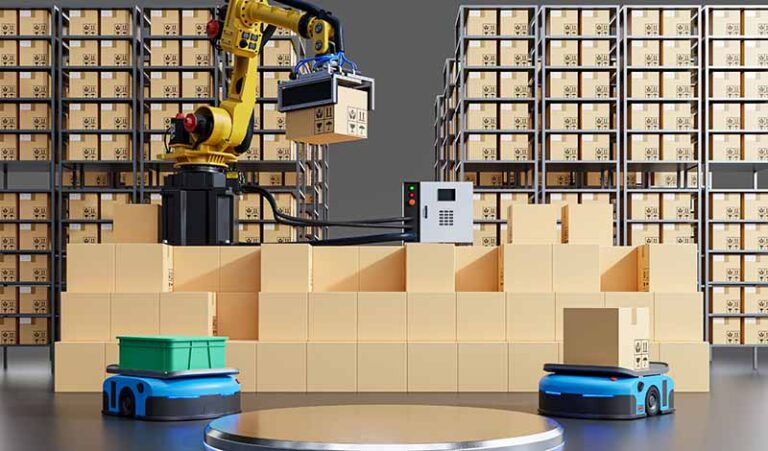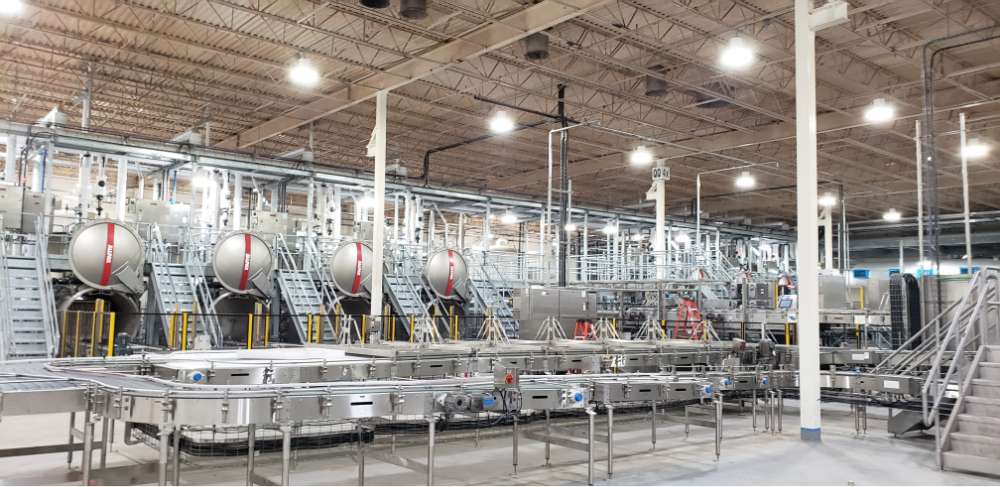
Device integration is an important part of what we provide to our clients here at Process Equipment & Controls. Read on to discover more about what integrated device technology really is and how integrated devices can help your business to thrive.
We understand the importance of meeting the unique needs of primarily Original Equipment Manufacturers and look forward to helping you find a solution that will benefit your business. Plus, our team of experts works to make the integration process simple.
Integrated device technology means utilizing a range of systems and devices that work together as a unified whole. While individual solutions are important and fulfill a range of highly specific needs, the emphasis is on collaboration, communication, and cooperation between all the separate components of the system
When your warehouse personnel uses handsets to scan items into and out of the facility, this inventory data needs feedback from other areas of your business. For example, your manufacturing or supply chain teams need access to this data in real-time, gaining up-to-the-minute insight into product statuses. This is an example of what integrated devices can achieve in action.
This requires a centralized platform that provides comprehensive control and monitoring capabilities. Devices integrate with this software, gaining a single source of truth from which to draw. Information and data siloing have become a thing of the past, as all personnel are working from the same integrated datasets.
Integrated device networks are designed to be fluid and flexible. At the project’s outset, digital technology professionals can design a complete solution that meets the current needs of the business. As this business grows, however, further integrations can be added, creating an evolving network.
Warehouse personnel using handsets to scan items in and out of the facility greatly benefits not only their own data tracking but also other areas of your business. By integrating mixed-signal, memory interfaces, timing solutions, and communications computing into one system, your manufacturing and supply chain teams can access this information in real-time and gain up-to-the-minute insight into product statuses.
Stakeholders can connect to this network from secure devices anywhere in the world, thanks to cloud-based technology. The result is a unified business with a global outlook that will result in high performance, improved customer service, and increased operational efficiency.

What sort of advantages can you expect when you use integrated device technology? Read on to learn more about the core benefits of device integration.
1
Using Integrated Device Technology components helps you to get more from your device data. Thanks to comprehensive connectivity, your hardware and software integrate with a broader network, facilitating communication and interaction between different systems and devices.
This is necessary in the Information Age. Reliable data transfer supports real-time monitoring, helping you to gain up-to-the-minute insight from your devices. This is an important aspect of integrated devices.
2
Device integration significantly reduces the potential for errors. This is because there are fewer links in the chain and fewer potential data weak points. If you need to manually transfer data from one location to another or rely on an intermediary, the process becomes complex, and errors begin to emerge.
If devices can communicate with one another directly, human error and other issues are essentially eliminated. A system of integrated devices means there is no data corruption, and datasets can be relied on at all times.
3
Data security is an important aspect of modern business. Organizations must comply with US and international standards of data protection, handling sensitive data in a responsible and sustainable way. Integrated devices are a big part of this.
As we’ve touched on above, device integration removes potential weak points and unnecessary complexity. Instead, data is transferred directly between the devices and systems that need to use it, with no intermediary or interception. With this kind of simplified, permission-based system, it’s much easier to achieve enterprise-grade data security.
4
When devices are able to communicate with one another, productivity and throughput are both greatly enhanced. There are no inefficiencies in communication, and there are no data siloing or information bottlenecks. Instead, there is a smooth and streamlined network of processes.
This has a marked impact on the overall capability of your business. Device integration lays the groundwork for increased operational efficiency across your entire organization, making it easier for your business to stay on track and retain high levels of engagement among your personnel.
5
With device integration, monitoring becomes more straightforward. You will be able to monitor device performance in real-time, from a centralized location or via remote channels. This is crucial to modern business operations, as management teams need to remain aware of device and system performance at all times.
By implementing proactive monitoring procedures, your teams are able to make sure that devices and systems are operating in an efficient, cost-effective manner. Any issues can be identified quickly and effectively so that potential obstacles are overcome before they get out of hand.
6
With smart, integrated components, you are revolutionizing the way your systems operate. For example, advanced power management components enable you to extend the lifespan of your devices and reduce energy consumption by utilizing the right amount of power for each application. Serial switching components, on the other hand, enhance communication between systems and devices.
All of this helps your business to become more flexible and agile. As processes become more streamlined, you will find it easier than ever before to plan your operations and meet incremental milestones along the way.

At Process Equipment & Controls, we are the experts when it comes to device integration and tailored solution development. Whether you need something like optical interconnect or wireless power solutions tailored precisely to your industry, our highly-trained professionals will develop a custom set of solutions according to your individual needs.
This gives us the understanding we need to formulate the right set of solutions for your industry and your organization.
From this starting point, we put our experience and knowledge to work. Our people are our biggest asset, and we assign the right team members to your project, directing the development of your custom set of integrated solutions. PEC is the go-to for a huge number of clients over a wide array of different fields — we’re confident we can deliver what you need.
It all begins with a consultation. Reach out to our team and schedule yours today, and let’s chat about what device integration can do for you and your business.